Part -II
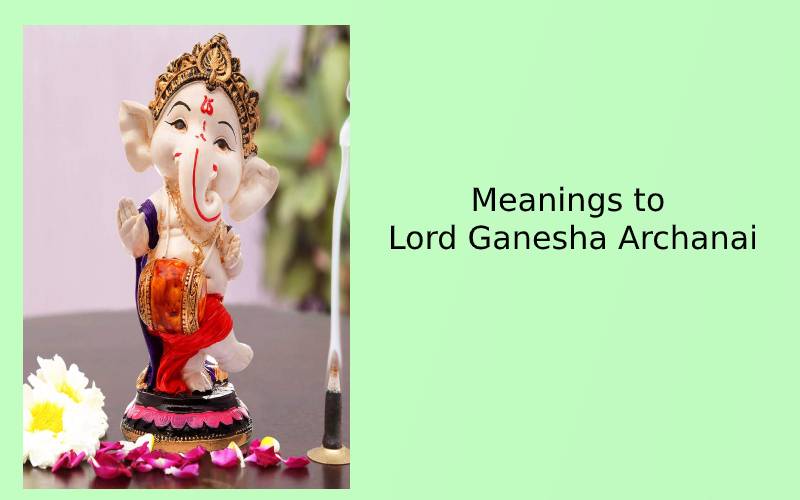
9. Oṁ Dhūmaketave Namaḥ – Salutations to the One who has hoisted the flag of smoke!
Explanation: Smoke is the symbolic representation of fire. Agni or fire is an important aspect in Sanatana Dharma. It has got the property to create, nourish, purge, and destroy things. Lord Ganesha as Agni Swarupa helps in the creation, and sustenance of positive thoughts and destruction of the negative. He is also worshipped as the God of knowledge who purges the Ajñana and provides us the with the supreme knowledge, Atma Jñana. Therefore, salutations to the One who is the Agni Swarupa.
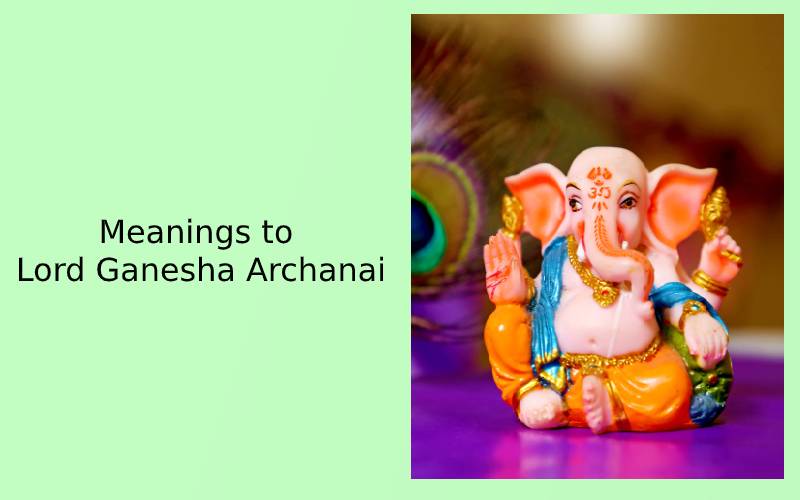
10. Oṁ Gaṇādhyakṣāya Namaḥ – Salutations to the One who is the chief of all demigods.
Explanation: Demigods are some of the higher forms of human evolution. One who is the chief of any institution is considered powerful. He provides whatever a worker needs to execute the work and attain the goal. Here, Lord Ganesha is considered the chief of the Gaṇas, who is none other than the Supreme Self, who is none other than the Supreme Self. Invoking Him, theas Gaṇādhyakṣāya, shall help us achieve all qualities that are required to attain the goal of human life. Salutations to Him.
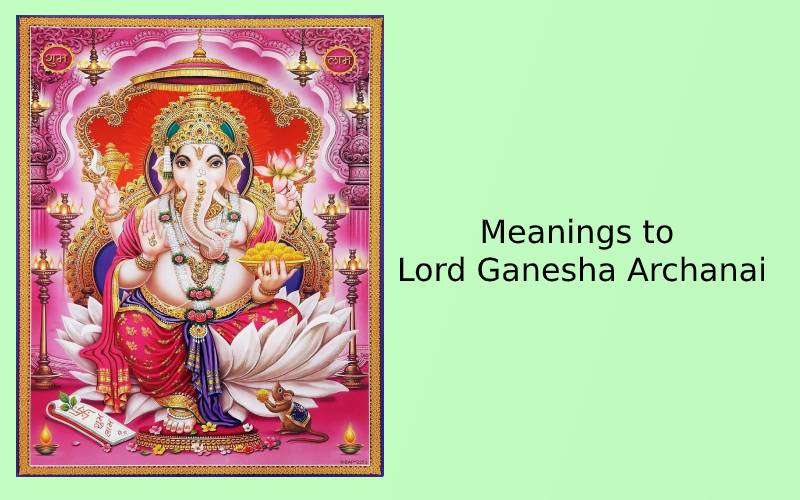
11. Oṁ Phālacandrāya Namaḥ – Salutations to the One who adorns the forehead with the moon.
Explanation: Ancient Sanskrit model of worship is highly aesthetic in describing the Saguṇa Brahman (God with form). Moon is a symbol of beauty and peace. Hence, Lord Ganesha is seen to wear a moon in his forehead which makes him aesthetically beautiful and helps a worshipper gain tranquility in his mind. Prayers to Him, to help us calm our mind and grow serene.
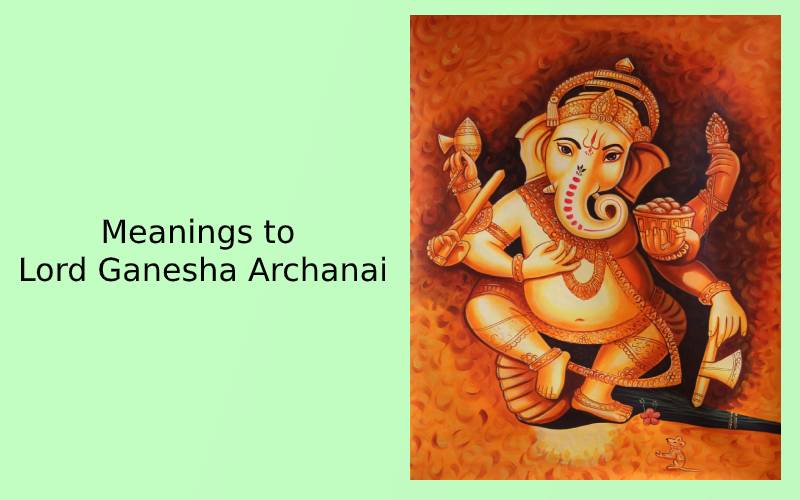
12. Oṁ Gajānanāya Namaḥ – Salutations to the One who has an elephant face.
Explanation: We all would have heard the story behind the elephant face of Lord Ganesha. One day, Goddess Parvati made a mould of a cute and chubby little boy. As she fell in love with her own creation, she decided to give it life. Thus, came Lord Ganesha. As her hands went had become dirty, she wanted to take a bath. It was the time when Lord Shiva had gone on a holy yaatra. So, she asked child Ganesha to guard the place when she went to bathe. It was the time when Lord Shiva had gone on a holy yaatra. WhenBy the time, Lord Shiva returned and wanted to entered, their place and Ganesha blocked Him, not knowing who Shiva was saying the reason.
Shiva, unknown of the new boy, tried to convince child Ganesha by answering him, but the child refused hims entry. Losing his temper, the Lord decapitated Ganesha’s head. Hearing the cry, Goddess Parvati presented herself at the scene. Horrified Parvati asked the Lord to bring back her child alive. Lord Shiva immediately ordered his Bhuta Gaṇā-s to shave off the head of the first living creature that is spotted sleeping in the Northern direction. They first found an elephant lying in the North. So, they brought back the head of an elephant. Shiva soon affixed the head and brought back the physically transformed child Ganesh to life. Hence the name, Gajānanā.
One can find great many significances given to different animals in Santana Dharma. ESimilarly, elephant is given greater importance because it symbolizes physical and mental strength, fertility, royalty, majesty, prosperity, intelligence, keenness, and wisdom. Various Purānā-s and Itihāsa-s also emphasise the iWe also have the importance and significance of elephant mentioned in various Purānā-s and Itihāsa-s. As the elephant-God, Lord Vinyaka is the truth personified. Salutations to Him, Lord Gajānan.
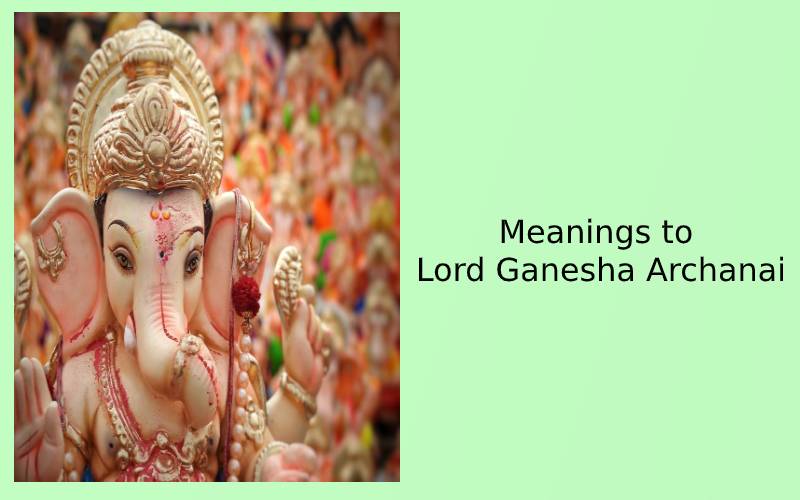
13. Oṁ Vakratuṇḍāya Namaḥ – Salutations to the One who has twisted trunk.
Explanation: ENow, we can be sure that everything in Sanatana Dharma holds unique significance with it. It can either be a symbolic indication or a representation of values. The twisted trunk of the Lord signifies valuable medical reasons according to the ancient practice of Nādi system of treatment. The direction of the curvature foretells which Nādi among the three is active in the Vigrahā and what kind of ritual should be performed.
Vakratuṇḍa is also known as the first incarnation of Lord Ganesha. In this manifestation, the lord slayed a daemon named Mātsarāsura, who was a devotee of Lord Shiva. The Asura symbolized envy and jealousy. Hence, praying to the Lord as Vakratuṇḍa helps destroy the daemonic qualities of envy and jealousy in us.
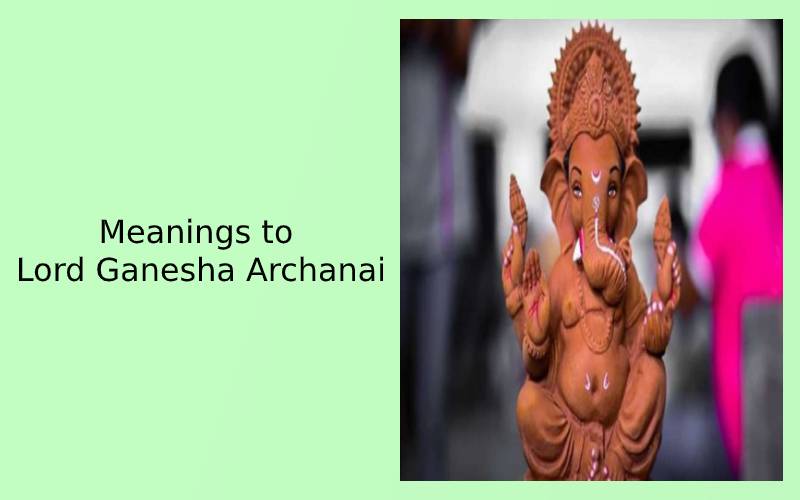
14. Oṁ Śūrpakarṇāya Namaḥ – Salutations to the One whose ears are like fan.
Explanation: There is a story behind why Lord Ganesha is called the Śūrpakarṇā. AIt goes as a group of Ṛṣi-s cursed Agni, the God of fire, to be extinguished and lost forever. This curse made Him powerless and he soon started losing his lustere. Imagine a world without fire, nothing was possible -- no food, plants, Yagñā, life etc. There soon prevailed an imbalance in universe.
Inspecting the condition, Lord Ganesha took pity on Agni and fanned Agni back to life with his huge ears. Here Śūrpa means ‘winnowing basket’ and karṇā means ‘ears’, hence the name Śūrpakarṇā. Invoking Him helps us fan away all our problems like dust.
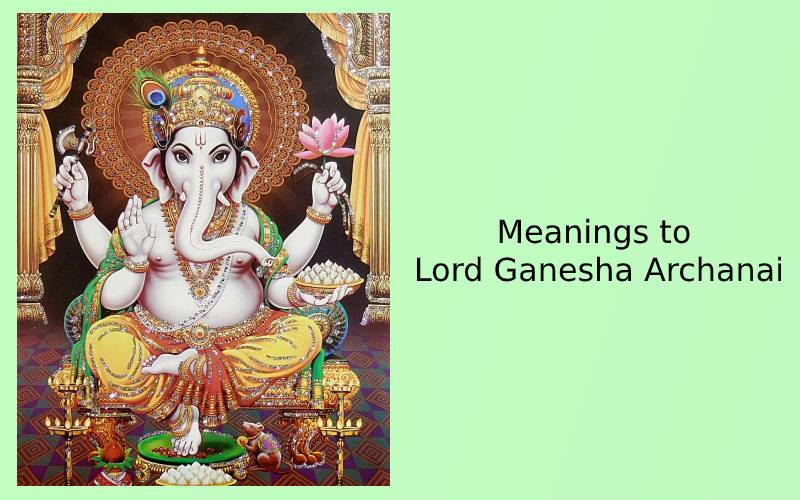
15. Oṁ Herambāya Namaḥ -Salutations to the One who is the protector of the weak.
Explanation: Heramba Ganapati is counted as the 11th among the 32 different forms of Ganapati. The name, Heramba, itself reveals the significance behind this form of Lord Ganesha. In Sanskrit, ‘Heya’ literally means ‘abondoned’ and ‘Ramba’ means ‘support’, which connotes to ‘protector of the weak’. The Heramba form of Ganapati is penta-headed with ten hands. Every other form of Ganapati is seen only to be riding on a mouse but the Vahana corresponding to this form is lion.
With Atma aAjñanā, we misidentify ourselves to the body-mind-sense complex and imagine to be weak. Hence, praying and surrendering to this brave form of the Lord protects us and helps us negate the misconception that we are the body-mind-sense complex and gives us the clarity of who we really are. Salutations to that Heramba Ganapati!
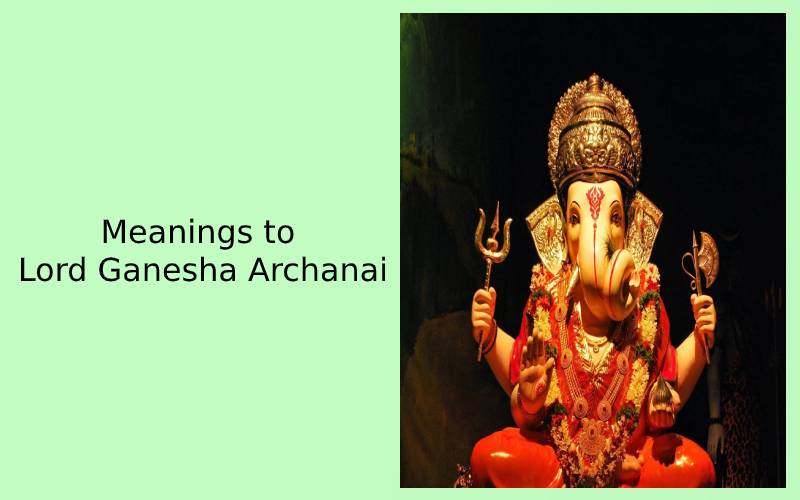
16. Oṁ Skandapūrvajāya Namaḥ - Salutations to the One who was born before Skanda.
Explanation: In Sanatana Dharma, the state of being elderly is given more importance. Here, elderly does not correspond to physical agehysical proportion but to mental development and maturity. In the first case, one may be young and still be matured and the other is its inverse. There is one satisfactory answer given to this sort of obscureness.
Traditionally, it is believed that there exists 4 Āśrama-s in any man’s life, Brahmacarya, Grihastha, Vanaprastha, and Sannyasa. One is comparatively matured depending on the Āśrama in which he stands. Unlike the Western perspective which treats life unidirectionally, the Eastern treats it as a cyclical process. So, the Āśrama in which one stands may have no direct relationship to physical age.differ irrespective of whether one is young or old physically. Salutations to the One who is the eldest of the two to help us gain maturity in life to see the Puruṣatha-s clearly and understand the Jīva Lakśya!
Om!
NEXT ARTICLE